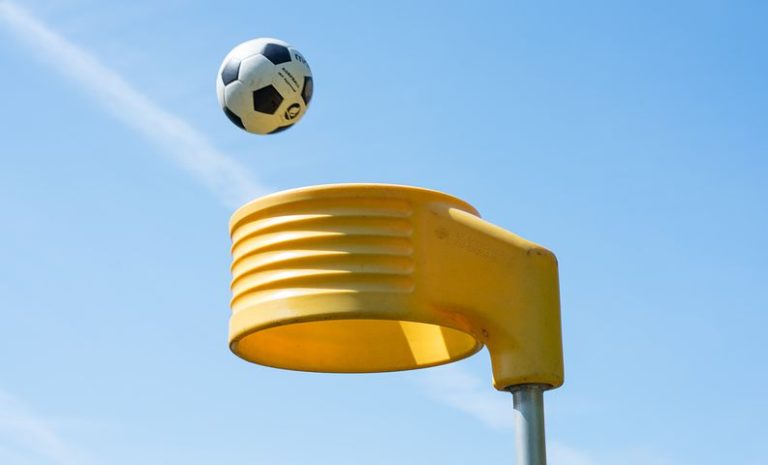General Rules of Straight Pool
In the world of straight pool, navigating the rules is akin to unraveling a complex puzzle that demands both strategy and precision. As you step into the realm of this classic game, you'll find yourself immersed in a labyrinth of regulations and techniques that can make or break your performance on the table. So, how exactly do you ensure you're playing by the book and mastering the art of straight pool? Let's explore the fundamental principles that govern this intricate sport and uncover the key to success in this challenging game.
Racking the Balls
When setting up a game of straight pool, you need to ensure that the balls are properly racked. Proper alignment is crucial for a successful break. The 15 object balls should be placed in a triangle with the apex ball on the foot spot. Make sure the balls are touching each other, forming a tight rack. This setup is essential to prevent gaps that could impede the flow of the game.
To achieve a successful break, you must strike the cue ball with a smooth stroke. Consistent speed is key to transferring energy effectively to the racked balls. Aim to hit the cue ball in the center with controlled spin to avoid scratches or losing control of the white ball. By mastering the art of racking the balls correctly and breaking with finesse, you set the stage for a smooth and enjoyable game of straight pool.
Take your time to rack the balls meticulously, ensuring they are snug and properly aligned. This attention to detail will pay off during the break, setting you up for a successful start to the game. Remember, in straight pool, precision and technique are your allies in achieving victory.
Breaking the Rack
To achieve a successful break in straight pool, focus on striking the cue ball with precision and finesse to maximize the spread of the racked balls. The break sets the tone for your game, so mastering it is crucial. When considering the power break, remember that while hitting the balls hard can be effective, it's more important to focus on control and accuracy. A controlled break can be just as powerful, if not more so, than a full-force hit.
Analyzing your break shot is key. Pay attention to the angle at which you strike the rack. Aim for the center of the rack to ensure a good spread of the balls. Break speed is another vital aspect to consider. Experiment with different speeds to find what works best for you. Remember that too much power can lead to a loss of cue ball control, resulting in a less effective break.
Cue ball control is essential after the break. Ideally, you want the cue ball to end up in a favorable position for your next shot. By controlling the cue ball well, you can set yourself up for a successful run. Remember, in straight pool, the break is not just about scattering the balls but also about setting yourself up for a productive inning. Mastering the break can give you a significant advantage in the game.
Pocketing Balls Legally
Having executed a successful break in straight pool, your next focus should be on pocketing balls legally to continue your momentum and build your score strategically. The cue ball is your key player in this game, as it dictates the flow of each shot. When aiming to pocket balls legally, shot selection is crucial. Analyze the table layout carefully to determine the best approach for each shot.
To pocket balls legally, consider the position of the cue ball after each shot. You want to set yourself up for the next shot while also pocketing balls consistently. This requires skillful shot selection to ensure you maintain control of the game. Visualize the path of the cue ball and the object ball to predict where they will end up after the shot.
As you progress in straight pool, shot selection becomes more complex. You must not only pocket balls but also plan several shots ahead. Anticipate how each shot will affect the position of the cue ball for future shots. This strategic thinking is essential for maximizing your scoring potential and maintaining control of the game.
Foul Shots and Penalties
Understanding the repercussions of foul shots and penalties is crucial in mastering the game of straight pool. When a player commits a foul, it not only affects the current game but can also have lasting consequences on the overall match. Here are some key points to keep in mind regarding foul shots and penalties:
- Foul Consequences: In straight pool, fouls can result in various penalties, such as loss of turn, deducting points, or even forfeiting the game under severe circumstances. It is essential to be aware of the specific rules regarding fouls to avoid unnecessary penalties.
- Player Warnings: Before enforcing penalties, players are usually given warnings for minor infractions. These warnings serve as a reminder to players to adhere to the rules and regulations of the game, promoting fair play and sportsmanship.
- Penalty Enforcement: Once a foul is committed, the referee or opponent will enforce the appropriate penalty based on the severity of the violation. It is crucial to accept the penalty gracefully and learn from the mistake to avoid repeating it in the future.
- Loss of Turn: One common penalty for fouls in straight pool is the loss of turn. This means that the player who committed the foul must relinquish their current turn, allowing the opponent to take control of the table. Understanding when and why a turn is lost is crucial to strategizing effectively during the game.
Safety Play Strategies
When playing straight pool, mastering cue ball control, executing defensive shots, and strategically positioning your balls are crucial components of successful safety play strategies. By utilizing these points effectively, you can not only protect your lead but also apply pressure on your opponent, forcing them into difficult positions. Understanding the nuances of cue ball control, defensive shots, and strategic positioning will elevate your game and give you a competitive edge in straight pool matches.
Cue Ball Control
To effectively execute safety play strategies in straight pool, mastering cue ball control is paramount. When it comes to cue ball control, understanding the spin you apply is crucial. By mastering cue ball spin, you can dictate where the cue ball will end up after contact. Shot selection plays a vital role in cue ball control; choosing the right shots can help you set up for your next move while keeping your opponent in a difficult position. Utilizing different spin techniques like topspin, backspin, and sidespin can enhance your ability to control the cue ball precisely. Remember, in straight pool, strategic cue ball control can be the key to gaining an advantage over your opponent.
Defensive Shots
Mastering defensive shots, also known as safety play strategies, is essential in straight pool to control the game's pace and keep your opponent on their toes. When employing defensive strategies, shot selection is crucial. It's not just about pocketing balls; it's about outsmarting your opponent. By incorporating mind games and psychological tactics, you can force errors and gain an advantage. Here is a table summarizing key defensive strategies:
| Defensive Strategies | Description |
|---|---|
| Snookering | Hiding the object ball |
| Containment Play | Limiting your opponent's options |
| Banking Safety | Using cushions for defense |
| Cluster Breakout | Breaking up clusters strategically |
| Distance Control | Keeping the cue ball far from object balls |
Strategic Positioning
Strategic positioning in straight pool, also known as safety play strategies, is a critical aspect that can dictate the flow and outcome of the game. When it comes to mastering this element of the game, there are key strategies to consider:
- Positioning tactics: Understanding how to leave your opponent in a challenging position can give you a significant advantage.
- Defensive maneuvers: Knowing when to play defensively, such as by hiding the cue ball behind other balls, can frustrate your opponent.
- Strategic placement: Placing the cue ball in a way that sets you up for your next shot is crucial for maintaining control of the table.
- Offensive moves: Sometimes, taking calculated risks and going for more aggressive shots can turn the game in your favor.
Mastering these aspects of strategic positioning can elevate your straight pool game to new heights.
Calling Shots
When playing straight pool, it's crucial to call your shots clearly before you take them, ensuring fair play and sportsmanship. Confirming your shot intention prevents any confusion or disputes during the game, maintaining a smooth and enjoyable experience. Enforcing shot calling rules keeps the game organized and upholds the integrity of the competition.
Clear Shot Declaration
To ensure fair play and clarity during a game of straight pool, you must declare the intended pocket for each shot before making it. This practice enhances shot accuracy and promotes player honesty, creating a level playing field for all involved. Clear communication is key in straight pool, fostering an environment of fair play and mutual respect among players. When declaring your shot, be specific and concise, stating the pocket you aim to sink the ball into. Avoid ambiguity or confusion by making your intentions clear to your opponents. By adhering to this rule, you uphold the integrity of the game and showcase your skills in a transparent manner. Remember, in straight pool, clear shot declaration is a fundamental aspect of the game.
Confirm Shot Intention
Ensuring clarity and fairness in straight pool gameplay, you must verbally confirm your shot intentions before executing them. Confirming your shot intention not only promotes shot accuracy but also enhances player communication during the game. By clearly stating which ball you intend to pocket and in which pocket, you eliminate any confusion or disputes that may arise later. This practice fosters a respectful and sportsmanlike environment where all players have a clear understanding of each other's strategies. Verifying your shot intention ensures that everyone is on the same page, reducing the likelihood of misunderstandings or disagreements. Remember, effective player communication is key to a successful and enjoyable straight pool match, so don't hesitate to confirm your shot intentions before taking your shot.
Enforce Shot Calling
Before proceeding with your shot, ensure that you clearly state and commit to the specific ball and pocket you intend to aim for, enforcing the practice of shot calling in straight pool. Shot accuracy and player integrity are crucial in straight pool, making shot calling an essential aspect of the game. Here are some reasons why shot calling is vital:
- Promotes Fair Play: By calling your shots, you ensure fair play and uphold the integrity of the game.
- Enhances Skill Development: Precision in shot calling improves your accuracy and overall gameplay.
- Avoids Disputes: Clearly calling your shots helps prevent disagreements and disputes during the game.
- Builds Focus and Concentration: Practicing shot calling hones your focus and concentration, leading to better performance on the table.
Continuous Scoring
In continuous scoring in straight pool, players aim to pocket balls consecutively without missing a shot, accumulating points with each successful pocket. This style of play requires a delicate balance of shot selection and positioning. To excel in continuous scoring, you must not only focus on potting the current ball but also plan your next moves carefully.
When approaching each shot, consider both offensive and defensive strategies. Offensive strategies involve thinking ahead, setting up your next shot while pocketing the current ball. This requires precision and foresight to ensure you maintain your scoring streak. On the other hand, defensive strategies come into play when you face a challenging layout. In such situations, it might be wiser to play safe, avoiding risky shots that could break your scoring momentum.
Mastering continuous scoring in straight pool demands mental acuity and strategic thinking. It's not just about sinking balls; it's about orchestrating a sequence of shots that maximize your score while minimizing the risk of missing. By honing your shot selection and positioning skills, you can navigate the table with confidence, stringing together pockets to achieve impressive scores. Embrace the challenge, experiment with different strategies, and watch your continuous scoring abilities flourish.
End of Game Conditions
To determine the end of a straight pool game, players must meet specific conditions regarding the total points scored and the final pocketed ball. As you approach the conclusion of a game, it is crucial to understand the game-ending scenarios and the rules that govern them.
Here are some key points to consider:
- Score Calculation: The game typically ends when a player reaches a predetermined number of points, often 100 or 150. It is essential to keep track of the score accurately to ensure a fair conclusion to the game.
- Final Pocketed Ball: In straight pool, the game can also end if a player pockets the final object ball after reaching the target score. This shot must be declared before attempting it to avoid any confusion or disputes.
- Rule Enforcement: It is important to adhere to the rules of straight pool to maintain the integrity of the game. Players should familiarize themselves with the official regulations and ensure fair play throughout.
- Player Etiquette: Good sportsmanship is key in straight pool. Whether you win or lose, displaying respect towards your opponent and the game itself is essential. Remember to shake hands and acknowledge a well-played match, regardless of the outcome.
Etiquette and Sportsmanship
Exemplifying good sportsmanship in straight pool is fundamental for fostering a respectful and competitive playing environment. Player conduct and respectful behavior are key aspects that contribute to a positive experience for all participants. Here are some essential etiquette guidelines to keep in mind when engaging in a game of straight pool:
| Etiquette and Sportsmanship | ||
|---|---|---|
| 1. Respect Your Opponent | 2. Avoid Distractions | 3. Accept Decisions |
| Show respect towards your opponent, regardless of the outcome. | Focus on the game and avoid distractions that may disrupt the flow. | Accept the decisions made by the referee or the opponent without argument. |
| 4. Celebrate with Grace | 5. Stay Positive | |
| Celebrate your victories with grace and humility. | Maintain a positive attitude throughout the game, even in challenging situations. |
Frequently Asked Questions
What Are Some Common Strategies for Breaking up Clusters of Balls in Straight Pool?
To break up clusters in straight pool, position play is key. Utilize defensive tactics and smart shot selection. By playing safe and strategically, you can create opportunities to break up clusters and continue your run.
How Can Players Improve Their Cue Ball Control in Straight Pool?
To improve your cue ball control in straight pool, focus on position play and using English. Pay attention to speed control to execute precise follow shots. Practice these techniques to enhance your gameplay and gain better control of the cue ball.
Are There Any Specific Rules Regarding Jump Shots in Straight Pool?
When playing straight pool, mastering jump shot etiquette and techniques can be game-changing. Did you know that the average professional player makes 70% of their jump shots? Elevate your game by practicing this skill.
What Is the Significance of the "Push Out" Option in Straight Pool?
In straight pool, the 'push out' option allows you to strategically reposition the cue ball. It's a vital tool for defensive play, enabling you to set up your next shot or create challenging positions for your opponent.
How Do Players Handle Situations Where a Ball Becomes Stuck on the Edge of a Pocket During a Game of Straight Pool?
When a ball gets stuck on the edge of a pocket in straight pool, remember pocket etiquette. Utilize skillful positioning for ball alignment. Make strategic shots to free the ball and continue your impressive play.






